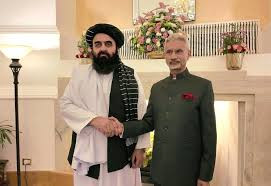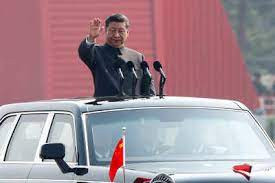Iran Launches Two Overnight Missile Barrages at Israel; Khamenei Declares “The Battle Begins”

IIE DIGITAL DESK : The rapid escalation marking the sixth day of cross-border hostilities, Iran launched two significant ballistic missile barrages at Israel overnight, prompting air-raid sirens and a series of Israeli counterstrikes. The intensifying conflict underscores the deepening regional tensions and raises the specter of broader escalation.
Shortly after midnight on June 18, Iran’s Revolutionary Guard Corps (IRGC) launched approximately 15 ballistic missiles in the first wave toward Israel, triggering sirens across Tel Aviv and surrounding regions. Roughly 40 minutes later, a second salvo of around five missiles was fired, again setting off alerts in central Israel and parts of the West Bank. Israeli defense systems successfully intercepted the majority of these projectiles, though debris from one interception ignited a fire in a central parking lot, damaging around 20 vehicles .
Iranian Supreme Leader Ayatollah Ali Khamenei responded to the missile launch by declaring “the battle begins” in posts on X (formerly Twitter), invoking powerful religious symbolism by invoking Imam Ali (Haydar) and the legend of Khaybar, signifying no mercy toward the “terrorist Zionist regime” of Israel.
In retaliation, the Israeli Air Force executed airstrikes targeting approximately 20 military sites in Tehran, including a centrifuge production facility and weapon-manufacturing infrastructure. Israel issued evacuation orders for District 18 residents in Tehran prior to the air raid. Explosions were also reported in Karaj. According to Reuters, Israeli strikes involved around 50 fighter jets and aimed to degrade Iran’s missile and nuclear capabilities.
This latest exchange follows a series of Israeli strikes inside Iran over recent days targeting nuclear, military, and civilian infrastructure—killing scores of Iranian military leaders and scientists and causing hundreds of casualties. Iran has reciprocated with ballistic missiles and hypersonic Fattah-1 projectiles, asserting control over the skies above Israeli-controlled areas .
U.S. President Donald Trump demanded Iran’s “unconditional surrender,” cautioned Khamenei that he is an “easy target” (though “not for now”), and signaled U.S. military preparedness in support of Israel, including repositioning carrier groups and deploying bunker-busting munitions . The U.S. Embassy in Jerusalem temporarily closed as a precaution. China, meanwhile, is evacuating its nationals from Iran amid growing fears.
Debris damage and minor injuries occurred. Iran’s strikes over the weekend drew reports of civilian casualties in Israel, while Israeli air attacks on Iran have inflicted heavy losses and infrastructural damage, with at least 224 reported killed. Widespread evacuations, including in Tehran, have intensified amid fears of deeper conflict.
Analysts warn that open warfare between two major regional powers—and a possible U.S. involvement—could spiral into a broader Middle Eastern war. Iran’s threats to withdraw from the Nuclear Non‑Proliferation Treaty and calls for full battle signal increasing stakes . European leaders are urging diplomatic de-escalation while global markets respond to oil-price and security concerns.
The most recent missile exchanges mark a dangerous escalation, with both sides demonstrating significantly enhanced strike capabilities. Iran’s hypersonic launches, accompanied by Khamenei’s hawkish declaration, suggest more offensive action to come. Israel and the U.S. remain on heightened alert.
As the conflict enters a perilous new phase, international observers are warning that even a single miscalculation could trigger an all-out war.
You might also like!
















